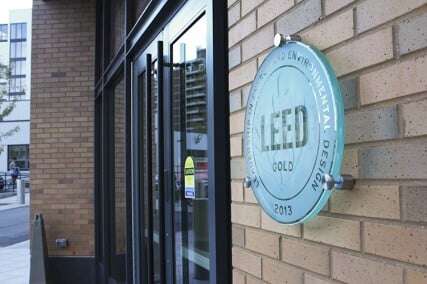For years there’s been grumbling that bulletproof barriers and LEED architecture are fundamentally incompatible. Simply put: That’s not true. Not only are bullet-resistant materials compatible with LEED standards, but good bullet-resistant design principles are fundamentally aligned with good LEED design principles: Both take a holistic approach in assessing how a building will be used in order to create the ideal design for a specific client. Highly qualified bullet-resistant barrier designers like Total Security Solutions are adept working within cost constraints to meet security and design goals that fit a client’s building use patterns.
HVAC and Bulletproof Design
When it comes to energy efficiency, a properly designed and balanced HVAC system is key. Problems inevitably arise when the bulletproof aspects of a design are treated as an afterthought–an especially common mistake in retrofits and renovations. Most retail banks, for example, are essentially one large room, with lobby, tellers stations, and office spaces separated by little more than cubicle walls and velvet ropes. If the property owner decides to “drop-in” a bullet-resistant barrier, they’re essentially splitting the space into two smaller rooms, separated by a two-inch thick wall of acrylic. This massively restricts airflow through what was previously a large, open space. Depending on the locations of thermostats, supply registers, returns, exterior windows, and doorways, you can end up with a “hot side”/”cold side” situation: Workers broil in a bulletproof hothouse while customers shiver in a frigid lobby.
Haphazardly increasing the “building load” in this manner drives up energy costs–someone is always tweaking the thermostat–and also badly strains the HVAC system itself, with the risk of damaging the system and decreasing its lifespan. It’s often possible to run new ductwork after the fact and rebalance the system, but that’s obviously far from ideal.
Energy-Efficient Bulletproof Design
“We are very conscious of these situations,” explains Total Security Solutions CEO Jim Richards. “That’s one of the reasons that I like to add polycarbonate or acrylic louvers along the tops of our systems.” Vertical and horizontal baffle window systems can also help address airflow and HVAC concerns in many situations.
If you’re new to working with bullet-resistant materials and companies, this one-minute video explains how to get the most out of that relationship:
Next Steps
- Download our Architect Resource Kit
- Read more blog posts for architects


